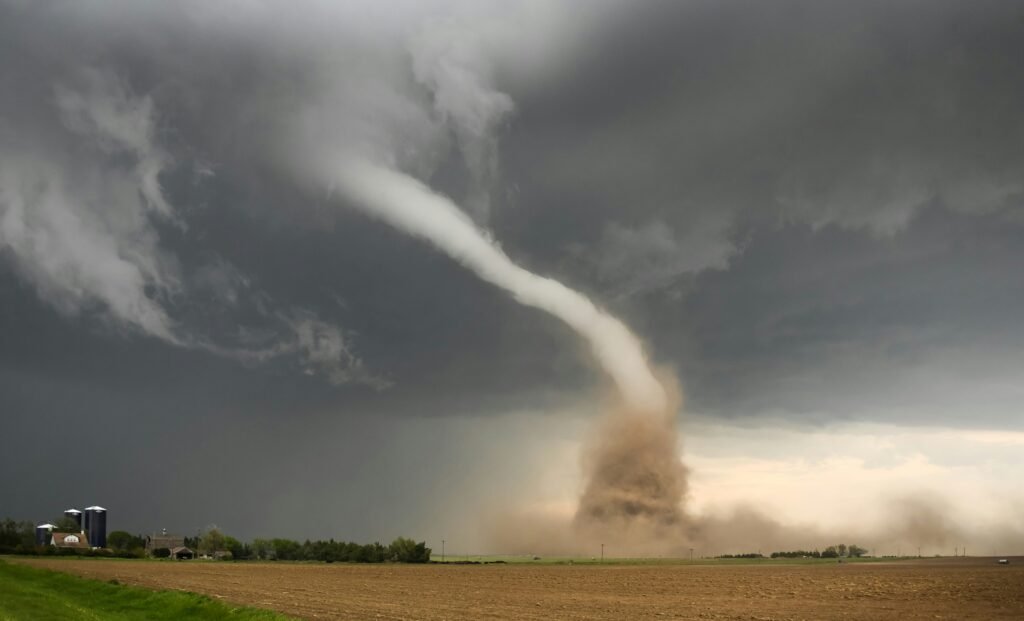“I realized the tornado was likely killing people as I collected data,” says Robin Tanamachi. “It made me see how serious my work was.”
Tanamachi, a research meteorologist and associate professor at Purdue University in Indiana, recalls her most memorable tornado.
On May 31, 2013, she watched a huge and powerful EF-3 tornado near El Reno, Oklahoma, with wind speeds of 295 mph (475 km/h). This tornado, the widest ever recorded, killed eight people, including three storm chasers.

“I remember feeling very emotional because I was seven months pregnant, and the pressure change caused me to have contractions,” says Tanamachi.
Chasing Tornadoes: Inside the Lives of Storm Chasers
Just like in the blockbuster “Twisters,” meteorologists like Robin Tanamachi chase powerful tornadoes across the US. They search for clues about how these storms form to improve forecasts and warnings.
According to the National Oceanic and Atmospheric Administration (NOAA), an average of 1,200 tornadoes hit the US each year. In the past decade, the US has seen between 908 and 1,818 tornadoes annually. In 2023, there were 1,423 tornadoes, which killed 83 people. So far in 2024, 1,397 tornadoes have claimed 39 lives.
Tornado strength is measured by the damage they cause, and they can be extremely destructive. With winds reaching up to 300 mph (483 km/h), tornadoes cause millions, sometimes billions, of dollars in damage each year, along with many fatalities.
Key Ingredients for Tornado Formation
Tornadoes form when specific atmospheric conditions come together. Warm, moist air near the ground meets cooler, dry air above, and wind shear strengthens the updraft and promotes a rotating vortex.

Destructive tornadoes often come from “supercells,” which are powerful thunderstorms with rotating updrafts. These storms bring heavy rain, strong winds, and large hailstones.
A strong vertical wind shear creates a horizontally rotating air cylinder, which the updraft lifts into the supercell. This cylinder narrows, stretches, and spins faster, eventually forming a tornado.
Inside the Storm
Why some thunderstorms unleash violent tornadoes while others do not remains a meteorological puzzle. According to NOAA, tornadoes are “rare, deadly, and challenging to predict.”
“Sometimes, even when conditions seem perfect, supercells just won’t produce a tornado,” says Tanamachi. “We can be waiting anxiously, but the storm may just spin without forming one.”
Tanamachi and other meteorologists are focused on understanding “tornadogenesis” — the process of how tornadoes develop.
“It’s one of the last big mysteries in severe thunderstorm science — what exactly triggers the formation of a tornado,” she explains. “Each field program gives us more clues, but it also raises more questions we’re eager to answer.”
“For all of us, it’s an endlessly fascinating and curious subject,” she adds.

Karen Kosiba, a storm chaser and atmospheric scientist at the University of Illinois Urbana-Champaign, emphasizes the importance of storm chasing in understanding how powerful swirling air columns form.
“We place portable weather stations very close to tornadoes, near the ground,” explains Kosiba. This field data helps reveal crucial details about the formation process that weather models alone cannot provide.
“While weather models can predict the conditions ideal for tornado formation, they struggle to accurately predict when and where tornadoes will appear,” Kosiba notes.
“There’s a synergy between modeling and observations,” she adds. “Neither method alone can capture everything, but together, they give us a more complete understanding of these events.”
Chasing Tornadoes: The Race Against Time
Tornado season in the Midwest typically spans from March to late June. Scientists like Karen Kosiba use weather models to pinpoint conditions favorable for tornado-producing storms.
“We aim to reach these areas the day or night before,” Kosiba explains. “It involves a lot of driving and constant repositioning.”
Storm chasers face a tight window for gathering data. “Tornado formation can occur in just a few seconds,” says Robin Tanamachi. Scientists typically have about 15 minutes to reach the right spot and set up radars and monitoring equipment, Kosiba adds.
“Getting accurate measurements is challenging with low success rates,” she notes. “It’s costly in terms of time and money.”

Monitoring tornadoes involves more active decision-making compared to hurricanes, according to Kosiba. Hurricanes cover a wide area and can be predicted three to five days ahead using models.
“Tornadoes are much harder to forecast,” Kosiba stresses. “They’re small-scale events in our atmosphere, and it’s difficult to predict if all the right conditions will come together.”
Escalating Danger
Changing Dynamics: Tornadoes and Climate Change
Climate change is altering tornado seasons, affecting their duration and locations. The traditional “Tornado Alley” in the Great Plains, including states like Texas, Oklahoma, Nebraska, and Kansas, is seeing fewer tornadoes.
Meanwhile, Tennessee, Georgia, Arkansas, Kentucky, and Alabama are experiencing an increase in tornado activity.
Scientists observe that Tornado Alley appears to be expanding eastward and southeastward across the US.
A 2023 study indicates that as temperatures rise, supercell storms—often precursors to tornadoes—will become more frequent and intense in the eastern US. Conversely, parts of the Great Plains may see a decrease in supercell activity.
This geographical shift raises concerns among experts, especially due to the higher risk posed by tornadoes in the southeast. These storms are more deadly there, often striking at night during winter months, which increases casualties and damage.
Detection is also more challenging in the rugged, forested terrain of the southeast compared to the open plains of the Midwest, notes Harold Brooks from NOAA’s National Severe Storms Laboratory.
